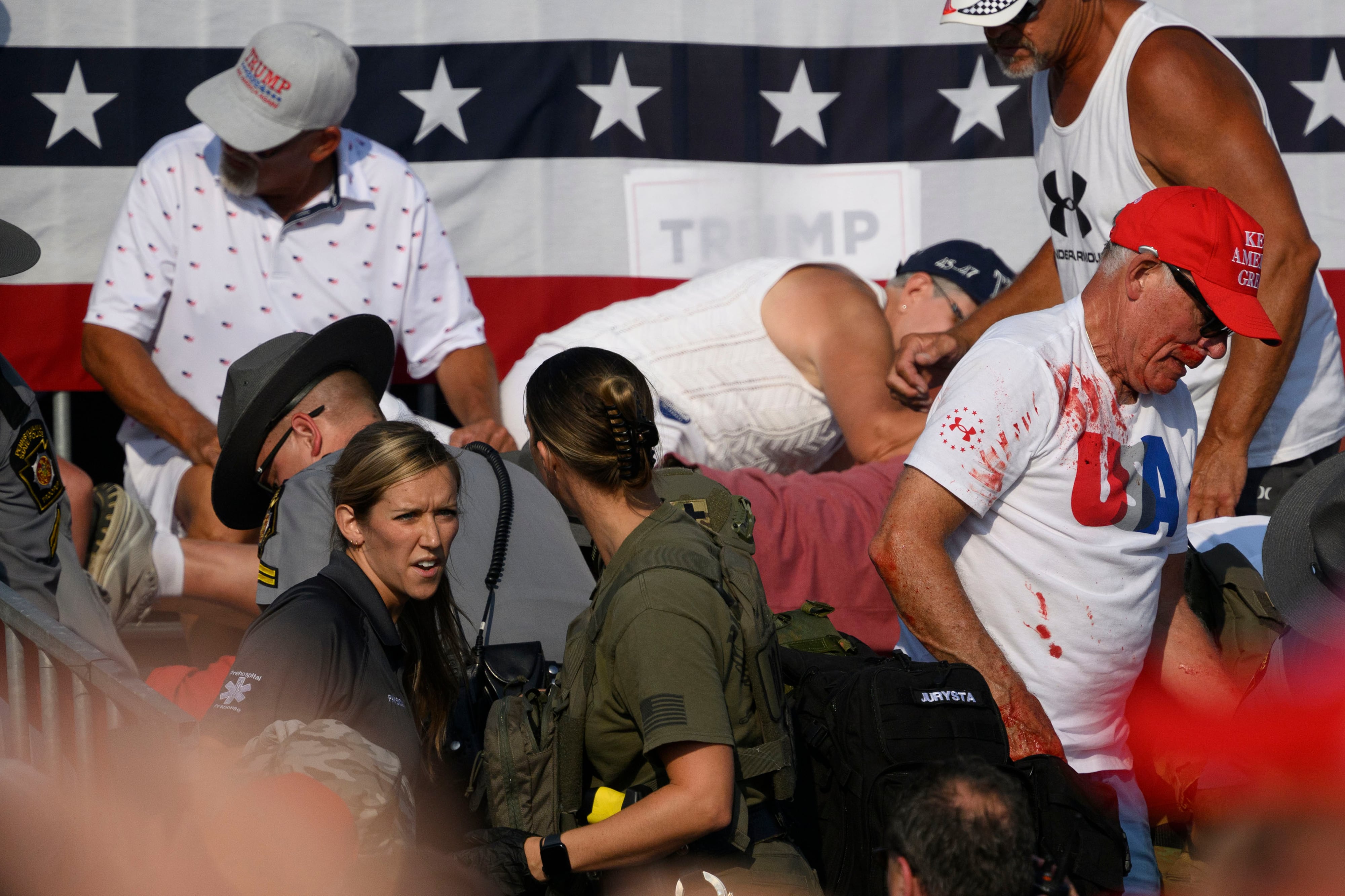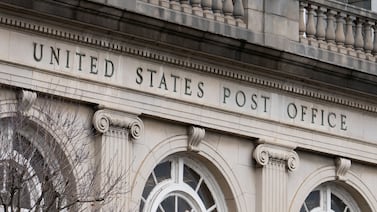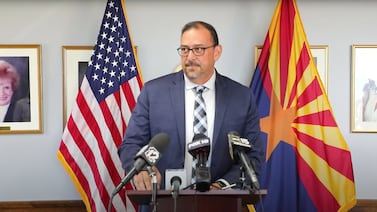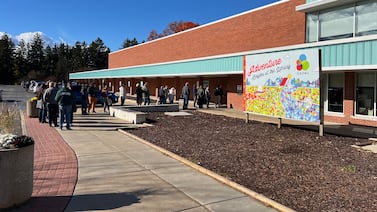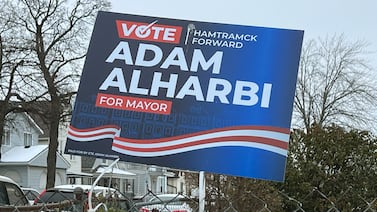Votebeat is a nonprofit news organization reporting on voting access and election administration across the U.S.
This news analysis was originally distributed in Votebeat’s free weekly newsletter. Sign up to get future editions, including the latest reporting from Votebeat bureaus and curated news from other publications, delivered to your inbox every Saturday.
Within hours of when former President Donald Trump and others were shot at a political rally in Pennsylvania, election officials in Arizona were scrambling to assess the implications for the early voting already in progress for the state’s July 30 primary.
Maricopa County Supervisors Chairman Jack Sellers was on the phone to confer with election officials and the county sheriff, and said he worked late into the night. The sheriff’s office later posted on social media that there is no known active threat against Maricopa County polling places. “Security plans are robust and we actively watch & evaluate every potential threat,” it said. On Sunday, election officials sent a letter to Maricopa poll workers and election staff, telling them that law enforcement knew of no active threats, but reminding them to share any concerns.
Sellers, a Republican, said the shooting might spur him to take steps to further protect his own safety, something law enforcement officials have urged him to take more seriously, given the stream of threats he and his fellow local officials have received. “I don’t feel very threatened, but I need to do more,” he said.
The shooting, he said, “made me feel sick.”
The threat of political violence moved abruptly again to the forefront of Americans’ consciousness with the assassination attempt on Trump, but for election officials, an environment of threats and fear has been the uncomfortable norm for years.
In Arizona, and all over the country election officials have been receiving death threats in the years since Trump and his allies claimed the 2020 election was stolen, some of which have led to federal prosecution. The specter of violence has also appeared at polling places and election facilities. For example, in Pennsylvania, two Virginia men were convicted last year for bringing weapons to the Philadelphia Convention Center where mail ballots for the November 2020 election were being counted.
“As a result of the threats and harassment election officials have experienced over the last several years, our community has invested in physical security for facilities and personnel, from trainings to physical security assessments and upgrades to exercising response and contingency plans,” said Amy Cohen, executive director of the National Association of State Election Directors. “We’ve done that so that we’re prepared to respond and recover in the event of an incident.”
Last week’s attack on Trump may not have direct implications for safety at the polls, but it provoked new rounds of conversations about how best to protect election workers and the voting public from politically motivated violence, and prompted election and public safety officials to review their precautionary measures. They’re careful to avoid making too many details of their security planning public, but they promised heightened awareness and are expecting to respond to amped-up concerns from others.
Scott McDonell, the county clerk in Dane County, Wisconsin, which includes Madison, expects the attack at the Trump rally to fuel worries in places that host voting. “We’ve been preparing for this election to be a difficult election, so I think the difference is that maybe this brings this issue to the fore for everybody else,” he said.
Jennifer Doinoff, president of the Texas Association of County Election Officials, said she expects a lot more discussion about security at an upcoming conference of state election officials organized by the Secretary of State’s Office. In Hays County, where she is the election administrator, she said it means she’ll “talk more with law enforcement about patrolling polling locations,” and meet with municipal and university police departments to make sure emergency and security plans are firmly in place and everyone is prepared for whatever might happen.
“We do that all the time. This isn’t a new thing,” she stressed. But “the awareness is a little more heightened in this election,” and she’s hoping law enforcement can have an increased presence.
Doinoff also plans to make sure voters are aware of the steps she’s taking to ensure they feel safe while voting.
Thad Hall, elections director in Mercer County, Pennsylvania, just north of where the assassination attempt took place, said election officials have already been planning for a host of possible scenarios, from power outages to cyber attacks.
“Some violent event happening at a polling place is one out of a thousand contingencies we might plan for,” he said. Hall stressed that county election officials are in constant contact with law enforcement and public safety officials. In addition, Pennsylvania Gov. Josh Shapiro earlier this year announced an Election Threats Task Force composed of law enforcement, public safety officials, and election officials that is assigned to share information in order to more quickly identify and respond to any incidents.
In Durham County, North Carolina, Derek Bowens, the elections director, said the county will be using a new location tracking system to monitor the election workers who drive results from polling places to the elections board. The system will update their location every three seconds, he said, allowing for more frequent checks on their location for safety purposes. The older system had longer lag times.
In April, a poll by PBS NewsHour/NPR/Marist found roughly 1 in 5 respondents said violence might be necessary to get the country back on track. That included 28% of Republicans and 12% of Democrats. Those are frightening numbers.
It’s also true that a majority rejected violence. But as the country learned last week, it just takes one person who doesn’t.
Votebeat editorial director Jessica Huseman and reporters Natalia Contreras, Jen Fifield, Alexander Shur, and Carter Walker contributed.
Carrie Levine is Votebeat’s managing editor and is based in Washington, D.C. She edits and frequently writes Votebeat’s national newsletter. Contact Carrie at clevine@votebeat.org.

